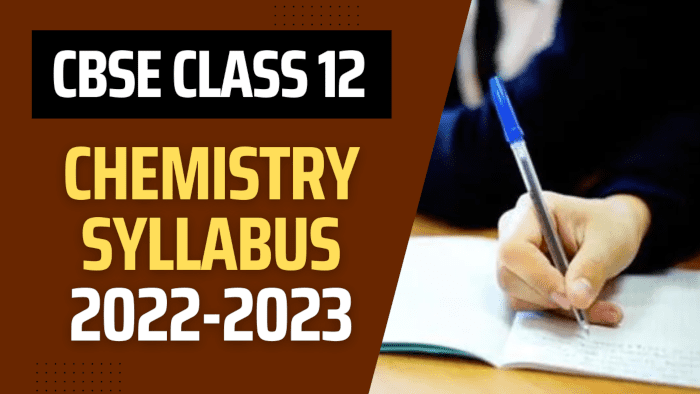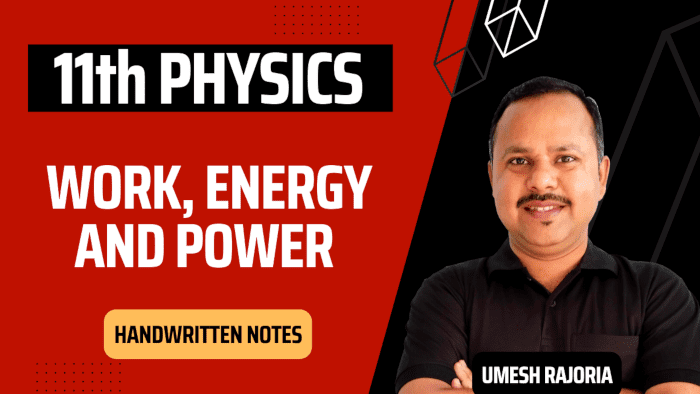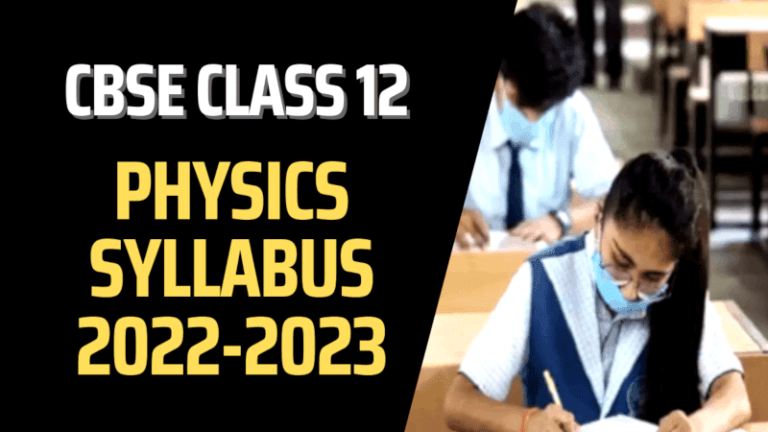Hello students,
In this article, we have included all the units of the class 12 Chemistry syllabus with mark distribution, question paper design, and the practical exam syllabus with mark distribution.
Chemistry is a very vast subject, and students who are preparing for the competitive exams must go through the syllabus for classes 11th and 12th.
The syllabus will help the students to check the completed portion and set their study timetable.
CBSE Class 12 Chemistry Syllabus 2022-2023


Students can download the full syllabus in PDF from the following link:


Unit-II: Solutions
Types of solutions, expression of concentration of solutions of solids in liquids, solubility of gases in liquids, solid solutions, Raoult’s law, colligative properties – relative lowering of vapour pressure, elevation of boiling point, depression of freezing point, osmotic pressure, determination of molecular masses using colligative properties, abnormal molecular mass, Van’t Hoff factor
Unit-III: Electrochemistry
Redox reactions, EMF of a cell, standard electrode potential, Nernst equation and its application to chemical cells, Relation between Gibbs energy change and EMF of a cell, conductance in electrolytic solutions, specific and molar conductivity, variations of conductivity with concentration, Kohlrausch’s Law, electrolysis and law of electrolysis (elementary idea), dry cell-electrolytic cells and Galvanic cells, lead accumulator, fuel cells, corrosion.
Unit-IV: Chemical Kinetics
Rate of a reaction (Average and instantaneous), factors affecting rate of reaction: concentration, temperature, catalyst; order and molecularity of a reaction, rate law and specific rate constant, integrated rate equations and half-life (only for zero and first order reactions), concept of collision theory (elementary idea, no mathematical treatment), activation energy, Arrhenius equation.
Unit-VIII: d and f Block Elements
General introduction, electronic configuration, occurrence and characteristics of transition metals, general trends in properties of the first-row transition metals – metallic character, ionization enthalpy, oxidation states, ionic radii, colour, catalytic property, magnetic properties, interstitial compounds, alloy formation, preparation and properties of K2Cr2O7 and KMnO4.
Lanthanoids – Electronic configuration, oxidation states, chemical reactivity and lanthanoid contraction and its consequences.
Actinoids – Electronic configuration, oxidation states and comparison with lanthanoids.
Unit-IX: Coordination Compounds
Coordination compounds – Introduction, ligands, coordination number, colour, magnetic properties and shapes, IUPAC nomenclature of mononuclear coordination compounds. Bonding, Werner’s theory, VBT, and CFT; structure and stereoisomerism, the importance of coordination compounds (in qualitative analysis, extraction of metals and biological system).
Unit-X: Haloalkanes and Haloarenes.
Haloalkanes: Nomenclature, nature of C–X bond, physical and chemical properties, optical rotation mechanism of substitution reactions.
Haloarenes: Nature of C–X bond, substitution reactions (Directive influence of halogen in monosubstituted compounds only). Uses and environmental effects of – dichloromethane, trichloromethane, tetrachloromethane, iodoform, freons, DDT.
Unit-XI: Alcohols, Phenols and Ethers
Alcohols: Nomenclature, methods of preparation, physical and chemical properties (of primary alcohols only), identification of primary, secondary and tertiary alcohols, mechanism of dehydration, uses with special reference to methanol and ethanol.
Phenols: Nomenclature, methods of preparation, physical and chemical properties, acidic nature of phenol, electrophilic substitution reactions, uses of phenols.
Ethers: Nomenclature, methods of preparation, physical and chemical properties, uses.
Unit-XII: Aldehydes, Ketones and Carboxylic Acids
Aldehydes and Ketones: Nomenclature, nature of carbonyl group, methods of preparation, physical and chemical properties, mechanism of nucleophilic addition, reactivity of alpha hydrogen in aldehydes, uses.
Carboxylic Acids: Nomenclature, acidic nature, methods of preparation, physical and chemical properties; uses.
Unit-XIII: Amines
Amines: Nomenclature, classification, structure, methods of preparation, physical and chemical properties, uses, identification of primary, secondary and tertiary amines.
Diazonium salts: Preparation, chemical reactions and importance in synthetic organic chemistry.
Unit-XIV: Biomolecules
Carbohydrates – Classification (aldoses and ketoses), monosaccharides (glucose and fructose), D-L configuration oligosaccharides (sucrose, lactose, maltose), polysaccharides (starch, cellulose, glycogen); Importance of carbohydrates.
Proteins -Elementary idea of – amino acids, peptide bond, polypeptides, proteins, structure of proteins – primary, secondary, tertiary structure and quaternary structures (qualitative idea only), denaturation of proteins; enzymes. Hormones – Elementary idea excluding structure.
Vitamins – Classification and functions. Nucleic Acids: DNA and RNA.
Note: The content indicated in NCERT textbooks as excluded for the year 2022-23 is not to be tested by schools.


CBSE Syllabus for Class 12 Chemistry Practical 2022-23


Below are the list of the experiments of Physics practicals.
PRACTICAL SYLLABUS (60 Periods)
Micro-chemical methods are available for several of practical experiments.
Wherever possible, such techniques should be used.
A. Surface Chemistry
a. Preparation of one lyophilic and one lyophobic sol
Lyophilic sol – starch, egg albumin and gum
Lyophobic sol – aluminium hydroxide, ferric hydroxide, arsenous sulphide.
b. Dialysis of sol-prepared in (a) above.
c. Study of the role of emulsifying agents in stabilizing the emulsion of different oils.
B. Chemical Kinetics
a. Effect of concentration and temperature on the rate of reaction between Sodium Thiosulphate and Hydrochloric acid.
b. Study of reaction rates of any one of the following:
i. Reaction of Iodide ion with Hydrogen Peroxide at room temperature using different concentrations of Iodide ions.
ii. Reaction between Potassium Iodate, (KIO3) and Sodium Sulphite: (Na2SO3) using starch solution as an indicator (clock reaction).
C. Thermochemistry
Any one of the following experiments
a. Enthalpy of dissolution of Copper Sulphate or Potassium Nitrate.
b. Enthalpy of neutralization of strong acid (HCI) and strong base (NaOH).
c. Determination of enthaply change during interaction (Hydrogen bond formation) between Acetone and Chloroform.
D. Electrochemistry
Variation of cell potential in Zn/Zn2+||Cu2+/Cu with change in concentration of electrolytes (CuSO4 or ZnSO4) at room temperature.
E. Chromatography
a. Separation of pigments from extracts of leaves and flowers by paper chromatography and determination of Rf values.
b. Separation of constituents present in an inorganic mixture containing two cations only (constituents having large difference in Rf values to be provided).
F. Preparation of Inorganic Compounds
Preparation of double salt of Ferrous Ammonium Sulphate or Potash Alum. Preparation of Potassium Ferric Oxalate.
G. Preparation of Organic Compounds
Preparation of any one of the following compounds
i. Acetanilide
ii. Di -benzalAcetone
iii. p-Nitroacetanilide
iv. Aniline yellow or 2 – Naphthol Anilinedye.
H. Tests for the functional groups present in organic compounds:
Unsaturation, alcoholic, phenolic, aldehydic, ketonic, carboxylic and amino (Primary) groups.
I. Characteristic tests of carbohydrates, fats and proteins in pure samples and their detection in given foodstuffs.
J. Determination of concentration/ molarity of KMnO4 solution by titrating it against a standard solution of:
a. Oxalic acid,
b. Ferrous Ammonium Sulphate (Students will be required to prepare standard solutions by weighing themselves).
K. Qualitative analysis
Determination of one anion and one cation in a given salt


(Note: Insoluble salts excluded)
INVESTIGATORY PROJECT
Scientific investigations involving laboratory testing and collecting information from other sources A few suggested Projects.
• Study of the presence of oxalate ions in guava fruit at different stages of ripening.
• Study the quantity of casein present in different samples of milk.
• Preparation of soybean milk and its comparison with natural milk with respect to curd formation, the effect of temperature, etc.
• Study of the effect of Potassium Bisulphate as a food preservative under various conditions (temperature, concentration, time, etc.)
• Study of digestion of starch by salivary amylase and effect of pH and temperature on it.
• Comparative study of the rate of fermentation of the following materials: wheat flour, gram flour, potato juice, carrot juice, etc.
• Extraction of essential oils present in Saunf (aniseed), Ajwain (carum), Illaichi (cardamom).
• Study of common food adulterants in fat, oil, butter, sugar, turmeric power, chilli powder and pepper.
Note: Any other investigatory project, which involves about 10 periods of work, can be chosen with the approval of the teacher.
For interesting Videos of Physics follow our YouTube Channel “PHYSICS WITH UMESH RAJORIA“
Hello Students,
Chemistry is the most crucial subject for all the students of class 11th, 12th and also for the students who are preparing for NEET or JEE. Chemistry is very important to understand many higher level concepts, which are derived from the concepts that we learn in class 11th and 12th.
So better understanding of all the concepts in chemistry is very necessary, not only to get good marks in chemistry exam but also to learn physics more effectively.


You will be happy to know that we have prepared class 12 Chemistry notes according to the latest NCERT syllabus for CBSE and other state board students.
👉These class 12 Chemistry notes help the students to understand the concept of Chemistry easily and retain the formulas for a longer time.
👉All the diagrams, formulas and solved numerical are included in these Chemistry Notes . These notes will be very useful during the preparation of 12th board exams and save most of the time of the students.
Get Physics Chemistry & Biology Notes
- 50000+ Students have Ordered so far !
- ⭐⭐⭐⭐⭐ 9.7/10 Average Rating
- Unlimited Access
Grab Everything Now At lowest Price
Just Pay ₹ 99/-
Benefits of Getting Notes e-Books
- Notes covers complete syllabus of Physics Chemistry & Biology for class 10, 11, 12 and NEET/JEE.
- Written in clean and readable handwriting.
- Revised every year with updated syllabus and exam pattern.
- It can save your time and cost which you spend for individual subject coaching.
- Notes are also beneficial at the time of revision.
- Notes are properly indexed with page numbers.
- Special Focus on the topics which carry more weight in exams.















